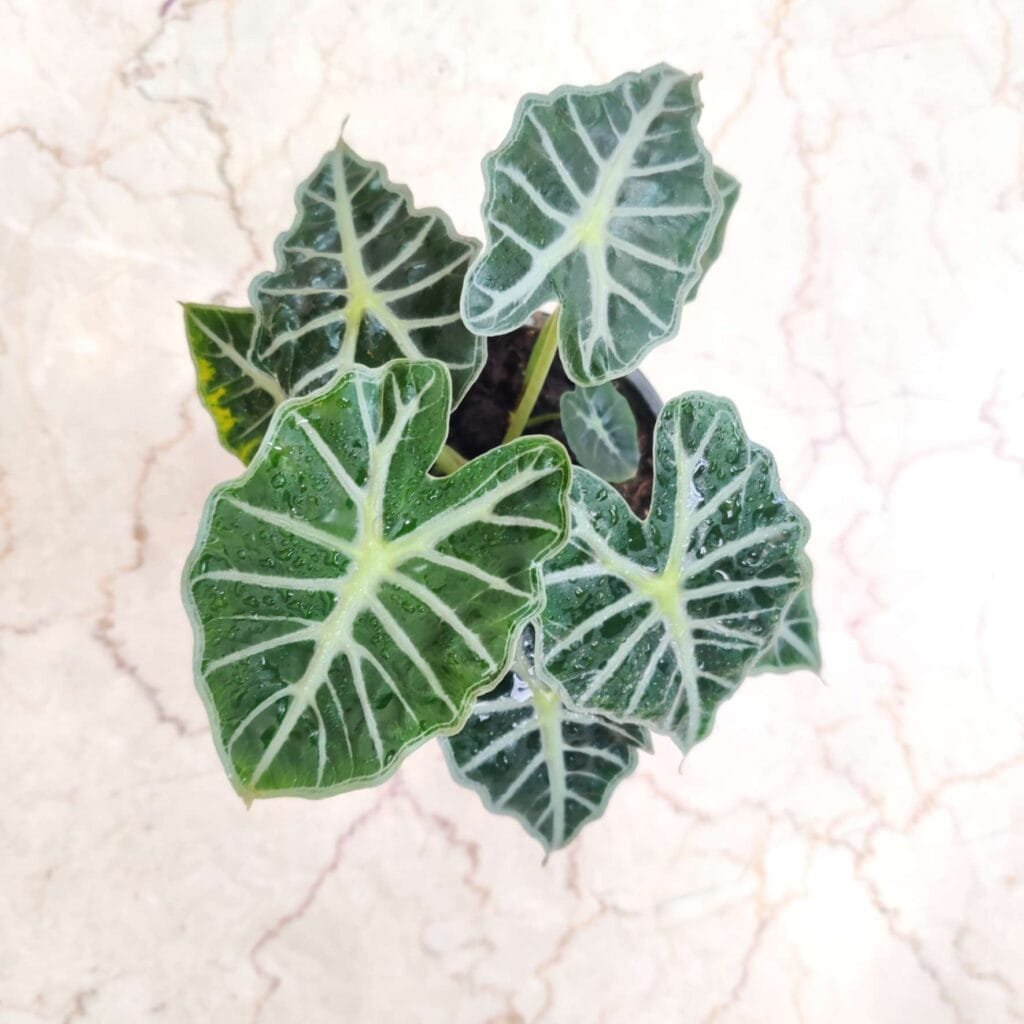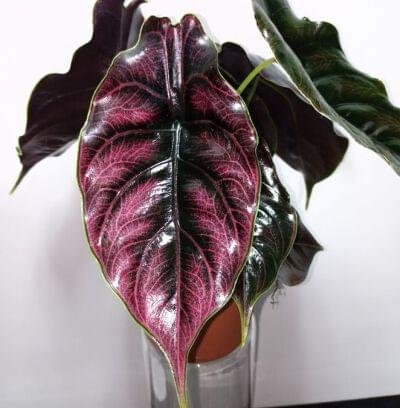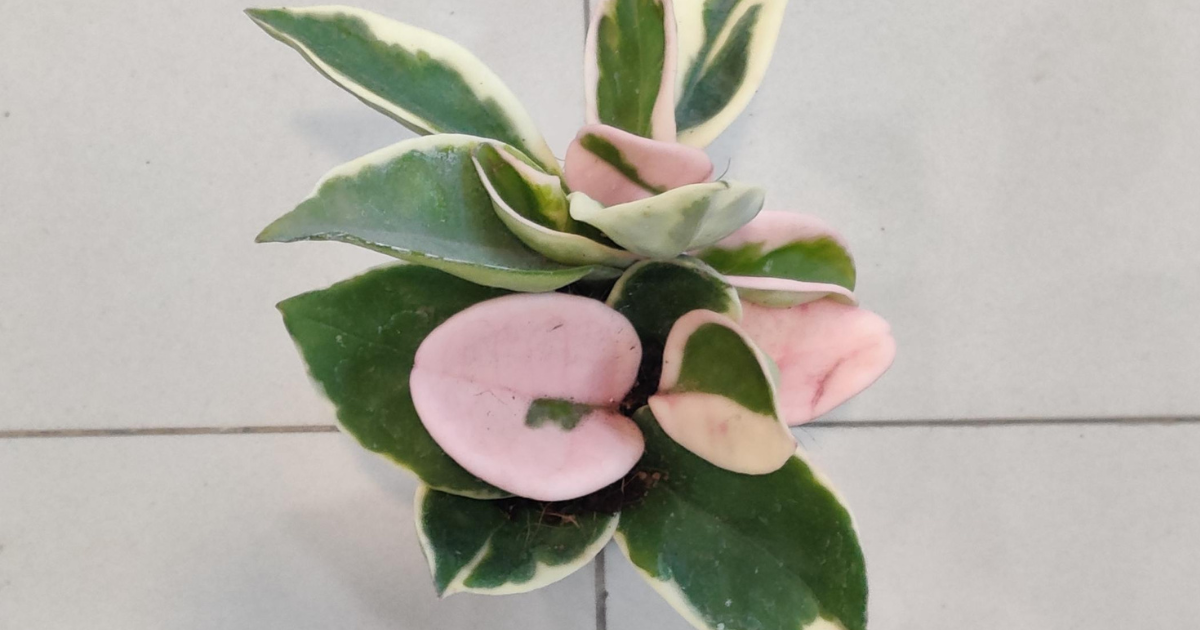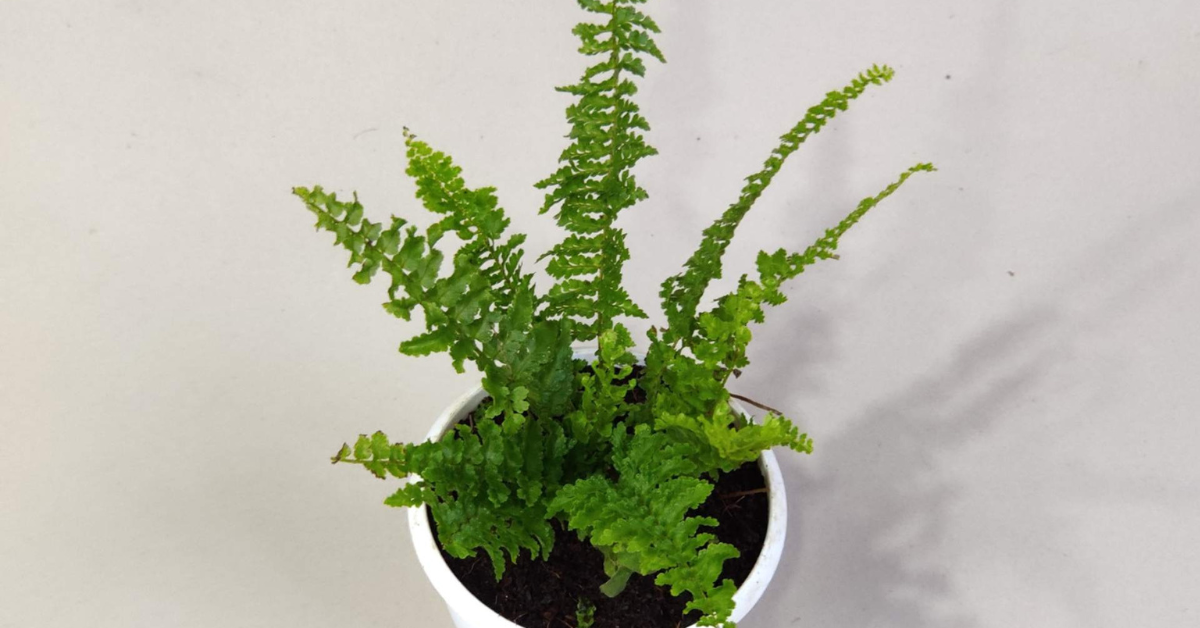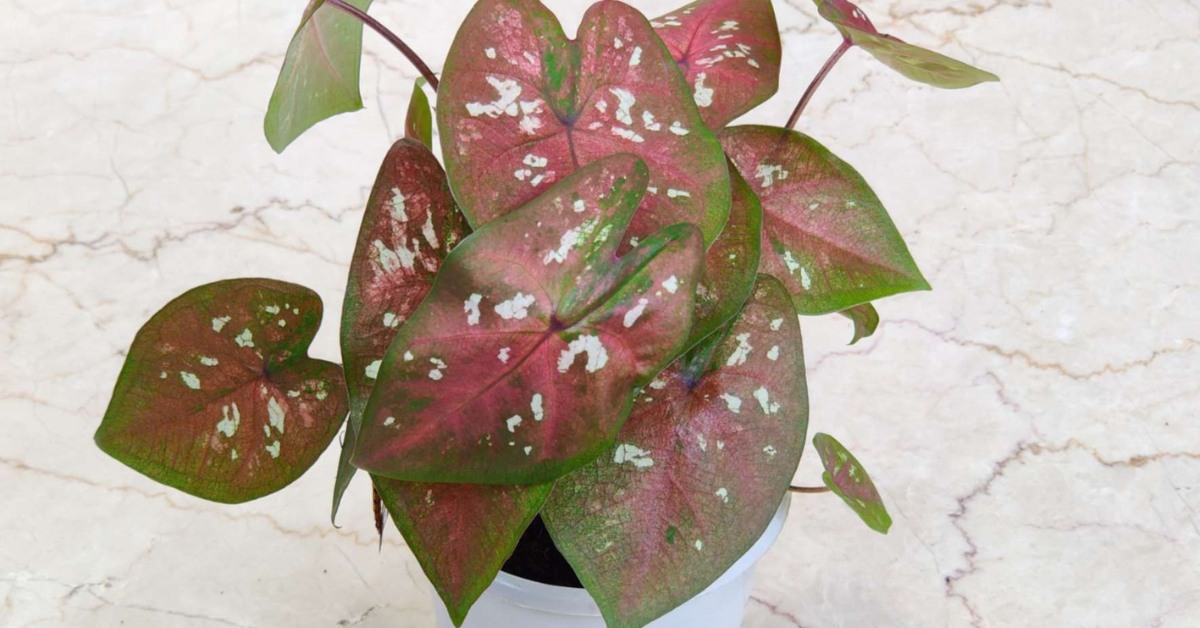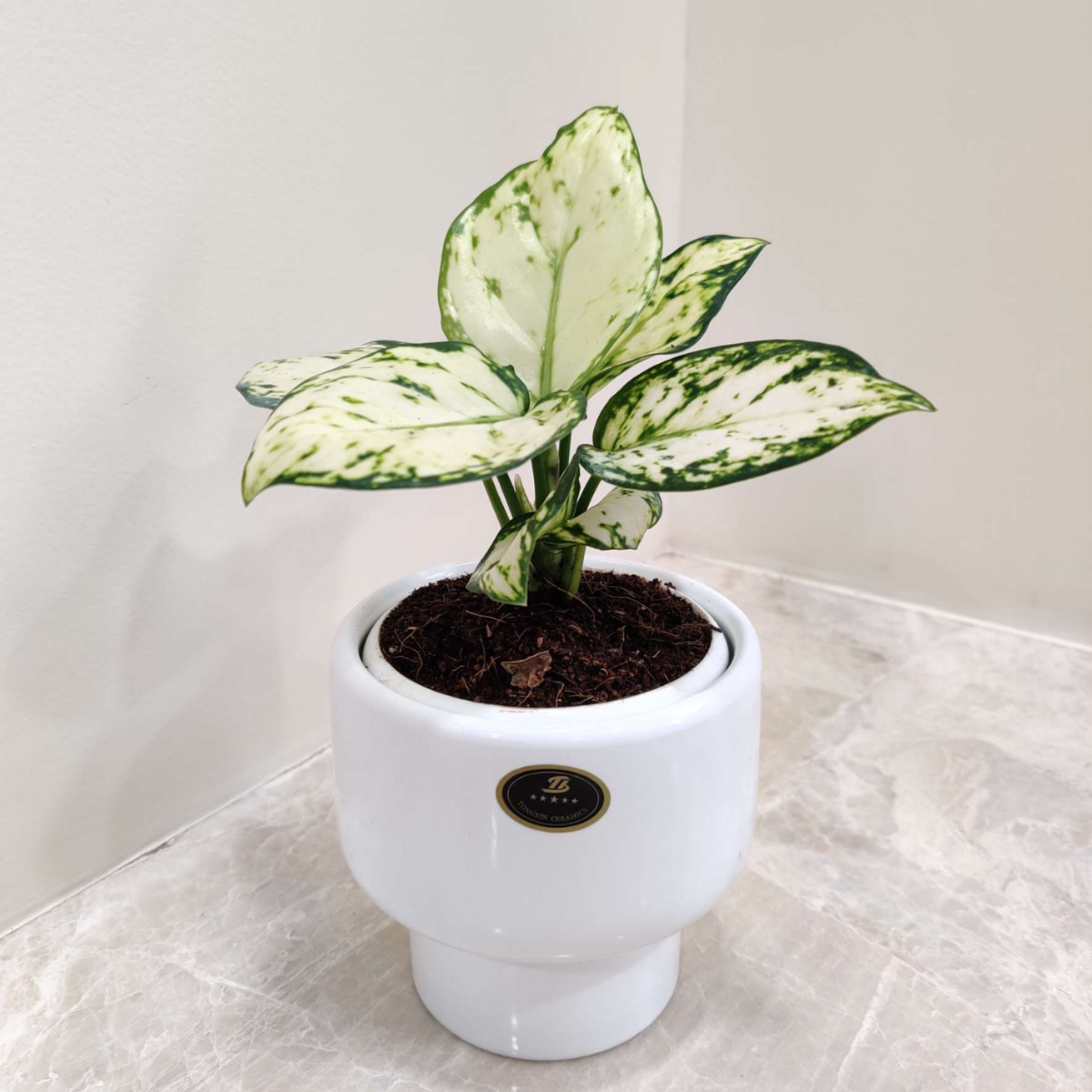Alocasia Polly, also known as the African mask plant, is a striking houseplant loved for its bold foliage and exotic appeal. Native to the tropical regions of South Asia, this plant has gained popularity among indoor gardeners for its unique arrowhead-shaped leaves with prominent white veins. However, keeping Alocasia Polly healthy requires an understanding of its specific care needs. This guide will cover everything from lighting and watering to propagation and common issues, helping you cultivate a thriving Alocasia Polly in your home.
Understanding Alocasia Polly
- Common Name: Alocasia Polly, African Mask Plant
- Botanical Name: Alocasia × amazonica ‘Polly’
- Family: Araceae
- Plant Type: Perennial
- Mature Size: 1-2 feet tall and wide
- Sun Exposure: Bright, indirect light
- Soil Type: Moist, well-draining, nutrient-rich
- Soil pH: Slightly acidic
- Bloom Time: Summer (rare when grown indoors)
- Native Area: Southeast Asia
- Toxicity: Toxic to pets and humans

How to Care for Alocasia Polly
1. Light Requirements
Alocasia Polly thrives in bright, indirect light. An east-facing window is ideal, where the plant can receive gentle morning sunlight. Direct sun can scorch the leaves, causing brown patches. If natural light is limited, use grow lights to supplement.
2. Soil and Watering Needs
This plant prefers well-draining, nutrient-rich soil that retains moisture without becoming soggy. A mix of peat moss, perlite, and potting soil works well.
- Watering: Keep the soil consistently moist but not waterlogged. Water when the top inch of soil feels dry, ensuring excess water drains away. Reduce watering in winter.
3. Temperature and Humidity
- Temperature: Maintain temperatures above 65°F (18°C). Avoid cold drafts and sudden temperature changes.
- Humidity: Alocasia Polly thrives in high humidity (60-80%). Use a humidifier, mist the leaves occasionally, or place the plant in a bathroom with good lighting.
4. Fertilization
During the growing season (spring and summer), feed the plant every two weeks with a diluted, balanced liquid fertilizer. Reduce feeding in fall and winter.
5. Pruning and Maintenance
- Remove yellow or damaged leaves to encourage healthy growth.
- Wipe the leaves with a damp cloth to remove dust and allow better light absorption.
Propagation of Alocasia Polly
Alocasia Polly can be propagated through division:
- Remove the plant from its pot carefully and shake off excess soil.
- Identify healthy rhizomes (thick underground stems) with at least one or two leaves.
- Separate the rhizomes gently and plant them in individual pots with fresh soil.
- Water well and place them in a warm, humid environment.
Potting and Repotting
Repot every 2-3 years or when roots outgrow the current pot. Choose a container that is one size larger and refresh the soil.
Common Problems and Solutions
1. Yellow Leaves
Cause: Overwatering or underwatering
Solution: Adjust watering schedule based on soil moisture levels.
2. Brown Leaf Tips
Cause: Low humidity or excessive direct sunlight
Solution: Increase humidity and move the plant to a shaded spot.
3. Drooping Leaves
Cause: Seasonal dormancy or sudden environmental changes
Solution: Keep the plant in a warm, stable environment with consistent care.
4. Pests (Spider Mites, Aphids, Mealybugs)
Cause: Dry conditions or poor air circulation
Solution: Wipe leaves with neem oil or insecticidal soap and maintain high humidity.
Winter Care for Alocasia Polly
During colder months, Alocasia Polly may enter dormancy. Reduce watering and stop fertilizing, ensuring the plant stays warm. If leaves drop, don’t panic—new growth should appear in spring.
Final Thoughts
Alocasia Polly is a stunning houseplant that rewards attentive care with lush, vibrant foliage. By providing the right balance of light, water, humidity, and warmth, you can enjoy a thriving African mask plant year-round. With proper maintenance and occasional repotting, this tropical beauty will continue to enhance your indoor space for years to come.
Ready to add Alocasia Polly to your collection? Start your journey with this exotic houseplant today and enjoy its striking beauty!
Frequently Asked Questions
1. Is Alocasia Polly Pet-Friendly?
No, Alocasia Polly is toxic to pets and humans if ingested. Keep it out of reach of children and animals.
2. Can Alocasia Polly Survive in Low Light?
While it tolerates lower light, it thrives in bright, indirect light. Low-light conditions may slow growth and cause leaf yellowing.
3. How Do I Revive a Dying Alocasia Polly?
Identify the issue (overwatering, low humidity, pest infestation) and adjust care accordingly. Trim damaged leaves and place the plant in optimal conditions.
4. Does Alocasia Polly Bloom Indoors?
Rarely. Indoor plants focus energy on foliage rather than flowering. If conditions are ideal, it may produce small, pale green flowers in summer.
